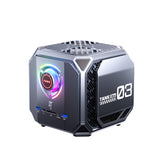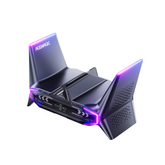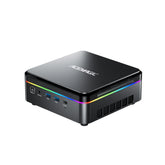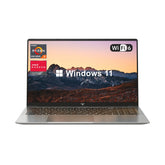CPU Cores vs Threads: Key Differences and Practical Impact

Whether you are a software developer or simply someone who relies on technology every day, making smart choices about your devices is crucial. From hardware to software, every investment should bring clear benefits and improve productivity. Yet, one critical component often doesn’t get the attention it deserves: the CPU. Too often, decisions are made without fully understanding the impact the CPU has on performance and cost.
Ignoring the role of CPU cores and threads can mean missing out on better value and efficiency. The right processor can make a noticeable difference—whether you’re running complex programs or just trying to get through your daily tasks smoothly. Understanding how cores and threads affect your computing experience is more than just technical detail; it’s a key to making wiser choices and getting the most from your technology investments.
Why It Pays to Understand CPU Cores and Threads
Knowing the difference between CPU cores and threads can save you money—and help you choose the right device. Whether you’re buying a new laptop, upgrading your desktop, or just wondering why your programs run slow, understanding how your CPU works can make a big difference. More cores or more threads doesn’t always mean better performance. It all depends on how you use your computer—so learning the basics helps you make smarter decisions.
Introduction to CPU Architecture
What is a CPU?
A CPU (central processing unit) is essentially the brain of your computer. It takes care of all the thinking—carrying out instructions from programs and controlling how your system runs. Everything from opening a file to playing a video relies on the CPU doing its job quickly and efficiently.
Brief History of CPUs and Processing Power
CPUs have evolved tremendously since their inception. Early CPUs had just one core and ran at relatively low speeds. As demand for faster, more efficient computing grew, manufacturers developed multi-core CPUs and improved architectures. Today’s CPUs handle complex tasks at blazing speeds, thanks to multiple cores and advanced threading technologies.
Understanding CPU Cores
Definition: What is a CPU Core?
A CPU core is like a mini processor inside the main processor. Each core can handle its own set of instructions, meaning the CPU can do more than one thing at a time. If you’re running multiple programs—say, a browser, music player, and a game—a multi-core CPU helps them run smoothly without slowing each other down.
How CPU Cores Work
Imagine having one person doing all the work in an office—that's a single-core processor. Now imagine having four or eight people, each handling different tasks at the same time—that’s a multi-core processor. Each core can handle its own job, which helps speed things up and keeps everything running more efficiently.
Most modern CPUs have 2 to 16 cores, and some high-end chips go even higher. More cores help with multitasking and heavy-duty tasks like video editing, programming, or running virtual machines. But not all software can use every core—some apps are still designed for just one or two.
Types of CPU Cores: Single-Core vs Multi-Core
Single-core CPUs have only one processing unit. This means the CPU can handle just one task at a time. If multiple tasks are running, they have to take turns, which can slow things down.
Multi-core CPUs have two or more cores inside a single processor. Each core can work on its own task at the same time. This makes it easier for the system to handle multitasking or run more complex software without delays.
As technology has advanced, multi-core CPUs have become the standard, while single-core processors are mostly found in much older or simpler devices.
Benefits of Multi-Core Processors
Multi-core processors allow for better multitasking and improved performance in demanding applications. They enable faster processing of complex tasks by dividing the workload across multiple cores. This means smoother video editing, quicker program compilation, and overall enhanced system responsiveness.
Understanding CPU Threads
What is a Thread in Computing?
A thread is the smallest unit of work that a CPU can handle. If you think of a CPU core as a worker, then a thread is like a specific task that worker is doing. Each core can run one or more threads, depending on the CPU’s design.
Threads allow a CPU to switch quickly between tasks or even run multiple tasks at once. This is useful for running apps that need to do many things in parallel—like loading web pages, updating your screen, or playing music—all at the same time.
Relationship Between Threads and Cores
In many modern CPUs, each core can handle two threads using a technology called Simultaneous Multithreading (SMT)—also known as Hyper-Threading in Intel CPUs. So, a quad-core CPU with SMT might show up as having eight threads in your system.
This doesn’t mean you have eight physical cores—it just means that each core can handle two streams of instructions more efficiently. Threads help keep the CPU busy by filling in the gaps when one part of the core is waiting for something, like data from memory.
Single-Threaded vs Multi-Threaded Performance
Some programs are single-threaded, which means they only use one thread at a time. Others are multi-threaded, meaning they can split their work across multiple threads. Video editors, 3D software, and large spreadsheets often benefit from multi-threading.
But not all apps are built to take advantage of multiple threads, so sometimes having more threads won’t make a huge difference.
What is Simultaneous Multithreading (SMT)?
SMT allows each core to run more than one thread at the same time. It doesn’t double your performance, but it can improve efficiency. Instead of a core sitting idle while waiting on data, SMT lets it work on another thread in the meantime.
This is especially useful in systems that are running many lightweight tasks at once—like background apps, browser tabs, or system updates.
Cores vs Threads: Key Differences
Core vs Thread: Technical Comparison
Cores are the actual physical processing units inside the CPU chip. Each core can independently execute instructions and perform tasks. Threads, on the other hand, are virtual sequences of instructions that a core can process. Thanks to technologies like Simultaneous Multithreading (SMT), each core can handle multiple threads, improving efficiency without adding more physical cores.
Which is More Important: More Cores or More Threads?
This depends largely on your computer use. More cores mean your CPU can truly multitask—running several heavy applications simultaneously without slowing down. More threads let each core work smarter by juggling multiple instruction streams, which is great for efficiency. For some tasks, having more cores is better, while for others, more threads can provide smoother performance. Understanding what software you use will help you decide which matters more.
How Operating Systems Handle Cores and Threads
Your operating system acts like a smart manager, assigning tasks to cores and threads based on priority and availability. It tries to keep all cores busy by spreading out workloads and switching between threads quickly. This way, even if your CPU has fewer cores but supports multiple threads per core, your system can feel responsive and fast.
Use Cases & Performance Impact
Gaming: Do You Need More Cores or Threads?
Most games perform well with 4 to 6 cores, as they rely heavily on single-threaded performance for the core game logic. Threads help when you have multiple background tasks, like streaming or voice chat, running alongside gaming. Having some extra threads can improve your experience, but beyond a certain point, more cores or threads won’t make a big difference in gaming alone.
Productivity Tasks (Video Editing, 3D Rendering, etc.)
For tasks like video editing, 3D rendering, or running virtual machines, more cores and threads make a noticeable difference. These programs split work across many cores and threads to finish projects faster. The more cores and threads, the better these tasks scale — saving you time and frustration.
Everyday Use and Web Browsing
For everyday activities such as web browsing, streaming videos, and using office apps, the demand on your CPU is usually light. Even a CPU with a modest number of cores and threads can handle these tasks without trouble. The difference between a quad-core and an eight-core might not be obvious in daily use.
How to Check Cores and Threads on Your Device
Windows, macOS, Linux Methods
- Windows: Open Task Manager (Ctrl + Shift + Esc), click the Performance tab, then select CPU. You’ll see how many cores and logical processors (threads) your CPU has.
- macOS: Click the Apple menu, choose About This Mac, then System Report. Under Hardware Overview, you’ll find the number of cores. You can also use Terminal commands like sysctl -n hw.physicalcpu.
-
Linux: Open a terminal and run commands like
lscpuorcat /proc/cpuinfoto get detailed CPU info, including cores and threads.
FAQs About CPU Cores and Threads
Do more cores always mean better performance?
Not always. More cores help only when the software can use them. Tasks like video editing or 3D rendering benefit from multi-core CPUs, but simple apps or games may not, making extra cores less useful.
Can my CPU run more threads than cores?
Yes. CPUs with Hyper-Threading (Intel) or SMT (AMD) can run two threads per core. For example, a 6-core CPU can handle 12 threads, improving multitasking and performance in some workloads.
Is a CPU with more threads better for gaming?
Not necessarily. Many games depend more on fast single-core performance than thread count. A CPU with fewer, faster cores may outperform one with more threads in gaming.
How do I know if my software supports multi-threading?
On Windows, open Task Manager > Performance > CPU.If only one core is active, the software is likely single-threaded.If multiple cores are active, it likely supports multi-threading.
Can I upgrade just the cores or threads on my CPU?
No. Cores and threads are built into the CPU's hardware and can’t be changed or upgraded separately. To get more cores or threads, you need to upgrade the entire processor.
Conclusion: Choosing the Right CPU Based on Cores vs Threads
Choosing the right CPU comes down to what you need it for. More cores help with heavy multitasking and professional workloads, while more threads improve efficiency for multitasking and parallel processing. For everyday use and gaming, a balanced CPU with a good mix of cores and threads is usually enough. Understanding these differences helps you pick the best processor for your needs—and get the most value out of your device.

































Leave a comment
Please note, comments need to be approved before they are published.